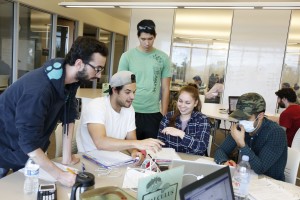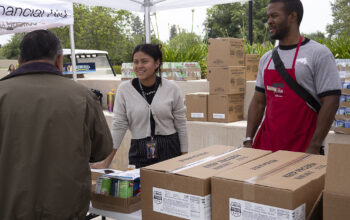
The tutoring center now has a total of 162 student tutors available to help those who are having trouble understanding any material they might not get in class.
The tutoring center is located in the Library / Learning Crossroads building on the first floor. Although tutoring is done on a walk-in basis, students looking for help at a certain time can call and schedule a one-on-one appointment if needed.
According to Crystal Kiekel, the director of Center for Academic Success, they offer two types of tutoring, which are traditional tutoring where the tutors wait for the students to come to them, and Course Embedded Tutoring where tutors work collaboratively with the instructors who teach the course.
“Math, English, and ESL are the most popular areas, but we offer tutoring in many subjects, including courses that are “gatekeepers,” Kiekel said.
According to Kiekel, examples of gatekeeper courses include math, science, anatomy, biology, and humanities.
“We want to provide these courses with more peer learning support so we can help more students succeed in these key areas that are often necessary for degrees, certificates, and transfer requirements,” Kiekel said.
Jonathan Khamis, an English as a Second Language (ESL) student tutor, helps students come up with strategies that enables them to learn it more effectively.
“When I started tutoring, I thought that student’s problems will basically be understanding the subject’s material. However, I found out that they lack the skill of finding the information themselves,” Khamis said.
According to Khamis, one of the most challenging things can be miscommunication. When students are unable to communicate properly, it becomes hard for him to understand what they mean. Sometimes Khamis will suggest methods such as writing it down on paper or using the Google Translation app.
“Faculty in these areas help us recruit, hire, and mentor tutors in these subjects,” Kiekel said. “These faculty also help the tutors work closely with the faculty who are teaching these classes. That way, tutors can know what’s going on in the classes and provide specific support for that particular instructor’s curriculum.”
According to Kiekel, the tutors are all student workers. The maximum number of hours a student can work per week is 25 hours. Tutors can get anywhere from 5 to 20 hours a week depending on what they are assigned to.
Michelle Valencia, an english major, is glad to see more tutors available for students who need extra assistance.
“I feel like students need those opportunities that they’re not able to get in class,” Valencia said. “Sometimes it’s hard getting specific questions answered or it can be intimidating, so having someone available one-on-one is a plus.”
According to Kiekel, the tutoring sessions are being funded through the Student Equity Plan. Through this, they are able to identify the classes that need the most support and add additional tutors for those specific subjects in need.



